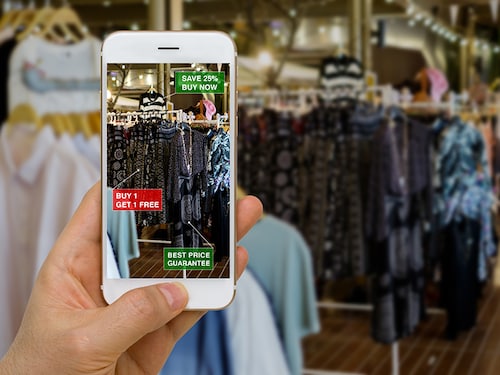Four must-haves for retailers to improve customer experience in 2020
In 2020, retailers must gear up to implement technology trends to provide superior customer experience and stay relevant in the retail game


Retail is transforming, with emerging consumer demands, e-commerce, a demographic shift and an evolving technology landscape. Technology, today, is augmenting retailers’ capabilities right from warehouse management and supply chain optimisation to consumer needs prediction. In 2020, retailers must gear up to implement technology trends to provide superior customer experience and stay relevant in the retail game. In this article, we have chosen four of the top technology trends a retailer must invest in this year.
1. Predictive analytics for mass personalisation
Gone are the days when marketers would broadly classify consumers into different segments to better target their products. Today, consumers not only want the exact product they are looking for but also personalised recommendations along with indices of comparison like price, features and so on. The likelihood of making a purchase increases for about 80 percent of consumers when they are offered personalised experiences. Many retailers might have invested in personalisation but still struggle to achieve mass personalisation at scale. It can be done with an effective amalgamation of customer data and analytics. AI-powered recommendations through advanced analytics can be used to deliver personalised and proactive recommendations to mass consumers. Sephora, for example, provides personalised recommendation on the home page of its customers using past purchase and browsing data. Predictive analytics, thus, understands consumer behavior and recommendation engines use this data to personalise customer shopping experience, thereby, increasing sales, repeat purchases and brand loyalty.
2. Data driven and automated warehouses for on-time delivery
Meeting customer demands with the right product at right time is crucial for retailers, as it directly impacts customer experience. Amazon Prime has been a game changer as its one-day delivery option has changed the perception of shoppers. Many shoppers abandon their shopping cart in the absence of a fast delivery option. To compete with Amazon’s influence on buying behavior, retailers are increasingly exploring methods of improving order fulfillment. With the increasing advent of Internet of Things (IoT), sensors and mobile devices, data can be gathered in real time at warehouses. Coupled with advanced data analytics, it can be used to effectively manage inventory, predict customer needs and anticipate demand. Autonomous robots that replace humans can reduce lead time and improve operational efficiency at warehouses for order fulfillment. Automation through AI and ML for repetitive tasks can shorten delivery time, and thereby keep up the promise of on-time delivery.
3. AR/VR to enhance shopping experience
Retailers are moving towards Augmented Reality (AR) and Virtual Reality (VR) to provide superior customer experience both inside and outside stores. According to a Gartner report, about 100 million consumers will use AR as a platform for shopping and roughly 46 percent of retailers have planned to provide AR/VR solutions to improve customer service by 2020. Customers can get store-like visualisation experience at their fingertips through smart apps. They can try clothes, glasses etc. and check its look and feel instantly and hence reduce order returns. AR can help provide customers with in-store navigation making it easy to locate products. AR/VR can further leverage the upcoming 5G infrastructure to provide real-time visualisation with zero response delay and convenient shopping experience.
4. Zero-party data for data privacy
Collecting data to gain consumer shopping insights has been in practice by retailers to drive sales. However, with recent regulations like GDPR (General Data Protection Regulation) and CCPA (California Consumer Privacy Act), retailers are scrambling to find the right balance between data privacy and data utilisation. Forrester predicts that retailers will move to zero-party data away from the conventional first-party data gathered by retailers. Consumers share zero-party data proactively and willingly about their purchase intent, personal context through feedback surveys, polls, questionnaire and so on. First-party data asks for consumers’ personal data, while zero-party data asks what they want from the brand. Also, while first-party data infers consumer behavior implicitly, zero-party data explicitly provides interests and preferences and therefore, consumers who willingly share their data receive better personalised products, offers and experience. Zero-party data, thus, stands at mid-way between privacy and personalisation and for retailers in 2020, this can be one-way to come out of this loop. The author is Anshuman Jaiswal, Principal – Digital Transformation, Kearney IndiaCo-Authors- Priyanshi Agrawal & Akshay Raut are Consultant – Digital Transformation, at Kearney India
First Published: Jan 28, 2020, 10:57
Subscribe Now